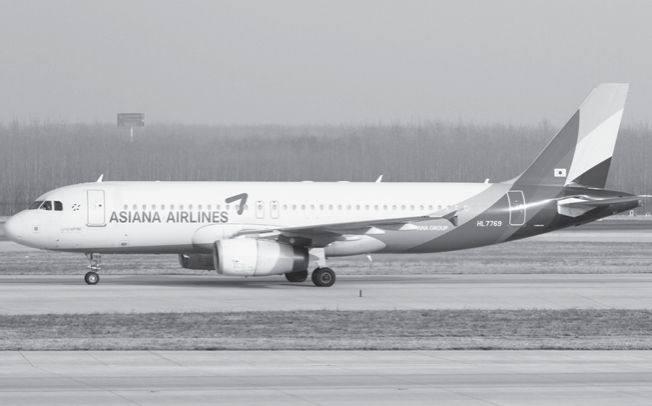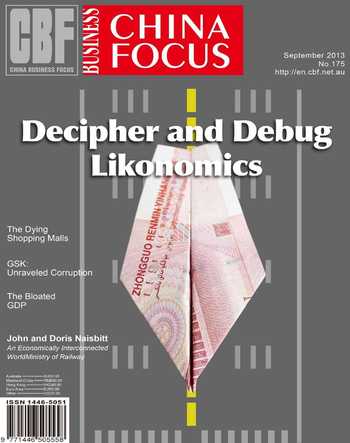How Foreign Airlines Do Business in China?
The accident of South Korea- based Asiana Airlines flight in San Francisco was under heavy scrutiny in the following month after its occurrence. This Korean-run flight, starting from Shanghai and making a stopover in Seoul before going to San Francisco, has its tail hit the ground while landing. It broke into two parts and got burned, killing two young Chinese girls.
Behind this tragedy we should see the nationalities of passengers of this flight. There were 291 passengers in total. 141 of them were Chinese and 77 of them came from South Korea. The rest came from the United States, India, Canada, France, Japan and Vietnam.
The number of Chinese passengers was more than twice of the number of Korean passengers and takes more than a half of the total number of passengers. This is closely related with the lowprice tickets and the visa service offered by foreign airlines. This is also the result of foreign airlines years of efforts of expanding in the Chinese market.
Speaking of the high proportion of the Chinese passengers in that Boeing 777 having the accident, Cai Jianming, a researcher of transportation at China Investment Consultancy, said: “In general, Asiana Airlines and other Korean airlines can provide cheap tickets and visa-less stay in South Korea for Chinese passengers. Thats why a lot of Chinese passengers chose to take their flights to the United States or other countries after the stopover in South Korea.”
From May 1, 2013, Chinese people with the U.S. visa might stay in South Korea for 30 days without the Korean visa when they have a stopover in this country.
Yoon Young-doo, CEO of Asiana Airlines, said that China was a market with strategic importance for the company. After opening the first KoreaChina air route in 1994, this Korean airline has already established flights in over 20 Chinese cities, making it the foreign airline with the largest number of flights in China. Most of the air routes between China and Korea are run by Asiana Airlines.
Li Xiaojin, Director of the Aviation Economics Institute at the Civil Aviation University of China, said:“Now the civil aviation of Korea and Japan has gone out of their best time. But their airlines carry capacity was designed based on their golden age. When the domestic market shrank, they need to expand to new markets for more passengers to fill their empty planes.”
Li Xiaojin also said that the flights between China and the United States are the most profitable flights in the world. The profits earned from a single U.S.-China airline equal the profits made from three U.S. domestic airlines, or seven transatlantic air routes.
The Reason for the Low Price
The summer holiday is when Asiana Airlines, and many other foreign companies, staged their promotional campaigns. From April to July 2013, Asiana Airlines spent an entire quarter running the China-Korea air routes with special discounts. In addition to that, Asiana Airlines also sensed the popularity of going to the U.S. among Chinese students and produced the discounted air routes between China and the U.S. The cheapest ticket from Shanghai to San Francisco only costs RMB 2,800(tax excluded) and Chinese tourists could even choose to fly to the opposite side of the world from Weihai, Xian, Chengdu and Qingdao.
For the tourist groups, Asiana Airlines provided more attractive discounts. The flight which suffered the crash accident carried many Chinese students of Summer Camps.
A worker for an air ticket agency in Beijing said that the Summer Camps in China usually applied for group tickets from February or March every year for the lower ticket price. “Each person will only spend around RMB 7,000 (tax included) on a ticket”. According to him, the number of phone calls to inquire about Korean airlines flights to the U.S. did not reduce even after the crash.
Take the flight from Shanghai Pudong Airport to San Francisco for example: the direct flight of Air China costs RMB 13,450 while the stopover flight costs RMB 8,522. The economy class of China Eastern Airlines direct flight from Shanghai to San Francisco costs RMB 13,800.
It is known that most passengers chose Korean airlines not only for the cheap air tickets, but also for the visaless stay in Korea.
“They can spend several days in Korea before flying to the United States,” said the aforementioned worker for the air ticket agency. “This is the biggest advantage for Korean airlines compared with Chinese and even American airlines.”
According to Li Xiaojin, Korean airlines provide perfect services for Chi- nese consumers, even though they provided cheaper tickets. For example, if passengers arrive in Seoul later than 5:00 pm, the airlines will provide free accommodation and dinners for passengers. If passengers arrive in the morning, free tours will await them.
Apart from Korean companies, many foreign airlines, especially those Asian airlines will stage several discount campaigns in China, in which a great number of cheap tickets of international flights are to be released. For example, Air Asia holds four quarterly discount campaigns every February, May, August and November, in which they sell the tickets for the flights half a year or one year later.
Even Delta Airlines, a U.S. company, usually provides unexpectedly cheap tickets for the economy class of its China-U.S. flights.
Combo of Passengers
According to Li Xiaojins research, in the past five years, 40% of the China-U.S. air routes were taken by U.S. companies; 30% were taken by Chinese airlines; 20% by Korean companies while the rest were taken by airlines from Japan or other companies.
Among them, Korean airlines passengers were low-end customers who took the economy class were attracted by the cheap tickets, while Chinese airlines carried those passengers that were businessmen, governmental officials or those who could afford high-price tickets.
Then how can these foreign companies make sure they will not suffer loss from the cheap tickets for Chinese consumers?
Li said that those foreign airlines sold expensive tickets to domestic passengers who usually take the business class and first-class cabin.
“Their primary goal is to fill the economy class with Chinese consumers and then fly to Korea or Japan, where the business class and first-class cabins are taken by domestic passengers,” Li said.
Thanks to the wonderful geographical locations of Seoul, Busan, Tokyo and other Asian airports, which do not stay away from the China-U.S. air routes, these airlines could make a stopover in their own countries, where local passengers board on the plane, without costing too much time. The cheap tickets, the convenient route, the non-prolonged flight, and the possible visa-less stay, made these foreign airlines popular for ordinary Chinese passengers who want to fly to the United States.

